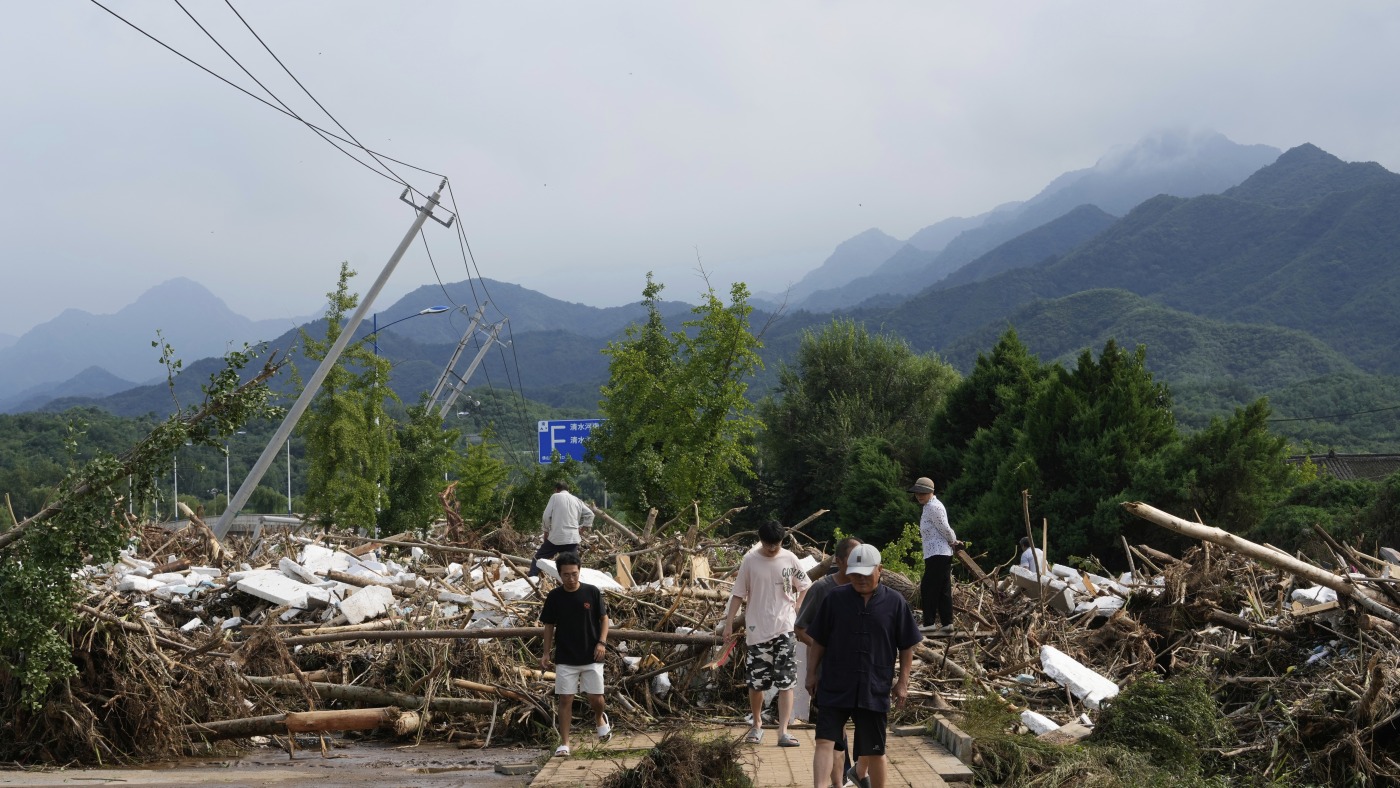The Devastating Impact of Beijing’s Deluge: A Call for Resilience and Climate Action
Introduction: A City Under Water
The recent torrential rains and catastrophic floods in Beijing have left an indelible mark on the city and its surrounding regions. The deluge, which brought nearly a year’s worth of rainfall in just a few days, has resulted in at least 34 fatalities, over 80,000 people displaced, and widespread destruction of infrastructure. This disaster has not only exposed the vulnerabilities of Beijing’s urban and rural areas but also underscored the urgent need for improved disaster preparedness, infrastructure resilience, and climate action.
Unprecedented Rainfall and Its Multifaceted Impact
The sheer volume of rainfall that inundated Beijing and its environs was unprecedented. Meteorological data indicates that some areas received over 600 millimeters of rain in a matter of days, a figure that surpasses the annual average for the region. This deluge overwhelmed drainage systems, causing rivers to burst their banks and triggering flash floods that swept through urban and rural landscapes alike.
The impact of this extreme weather event is multifaceted. Beyond the tragic loss of life, the flooding has caused significant damage to critical infrastructure. Power outages affected more than 130 villages, disrupting communication lines and essential services. Over 30 sections of road were damaged, hindering rescue and relief efforts and posing long-term challenges to the region’s recovery. The destruction of agricultural lands and livestock further exacerbates the situation, as affected communities face potential food shortages and economic hardship.
The Human Cost and Displacement
The human cost of this disaster is immeasurable. Families have been torn apart, homes have been destroyed, and livelihoods have been disrupted. The relocation of over 80,000 people underscores the scale of the displacement and the profound uncertainty that now hangs over these communities. Many evacuees are left wondering when they can return to their homes and how they will rebuild their lives. The psychological impact of such a traumatic experience is profound and long-lasting, necessitating extensive mental health support for the affected population.
The Miyun district, a rural area northeast of Beijing, has been particularly hard-hit, with a significant number of fatalities and evacuations reported. This highlights the vulnerability of rural communities to extreme weather events, often due to inadequate infrastructure and limited access to resources. The disparity in disaster resilience between urban and rural areas is a critical issue that demands attention and investment.
Disaster Management and Preparedness: A Critical Examination
The Beijing floods raise critical questions about disaster management and preparedness. While China has made significant strides in economic development, its ability to cope with extreme weather events remains a challenge. Reports suggest that existing disaster management systems were strained and, in some cases, overwhelmed by the sheer magnitude of the crisis.
Effective disaster management requires a multi-pronged approach, encompassing early warning systems, infrastructure resilience, emergency response capacity, and public awareness. Accurate and timely weather forecasts are crucial for providing advance warning to vulnerable populations, allowing them to evacuate and take necessary precautions. Investing in robust infrastructure, including drainage systems, flood defenses, and resilient power grids, is essential for mitigating the impact of extreme weather events.
Well-trained emergency response teams, equipped with the necessary resources and equipment, are vital for conducting search and rescue operations and providing assistance to affected communities. Raising public awareness about disaster risks and promoting preparedness measures can empower individuals and communities to take proactive steps to protect themselves.
Climate Change and the Future: A Stark Reminder
While attributing any single weather event solely to climate change is complex, the increasing frequency and intensity of extreme weather events around the world are consistent with the predicted impacts of a changing climate. Rising global temperatures are leading to more intense rainfall, prolonged droughts, and more frequent heatwaves. The Beijing floods serve as a stark reminder of the urgent need to address climate change.
Reducing greenhouse gas emissions and transitioning to a low-carbon economy are essential steps for mitigating the risks of future extreme weather events. In addition, investing in climate adaptation measures, such as improving infrastructure resilience and developing drought-resistant crops, is crucial for protecting vulnerable communities from the impacts of climate change.
Lessons Learned and the Path Forward
The Beijing floods offer valuable lessons for policymakers, urban planners, and communities alike. These lessons include the importance of integrated risk management, the need for sustainable urban development, and the power of community engagement. A holistic approach to risk management, encompassing prevention, preparedness, response, and recovery, is essential for building resilience to extreme weather events.
Rapid urbanization can exacerbate flood risks if not accompanied by adequate investment in infrastructure and sustainable land-use planning. Empowering local communities to participate in disaster preparedness and response efforts can enhance their resilience and reduce their vulnerability. Moving forward, it is imperative that China and other countries facing similar challenges prioritize climate action, invest in disaster risk reduction, and promote sustainable development practices.
A Wake-Up Call for a Changing World
The heavy rains and flooding in Beijing are more than just a local tragedy; they are a stark reminder of the increasing vulnerability of our world to extreme weather events. The images of flooded streets, displaced families, and the heartbreaking loss of life should serve as a wake-up call, urging us to take immediate and decisive action to address climate change and build more resilient communities. The future depends on our collective commitment to creating a safer, more sustainable world for all.

